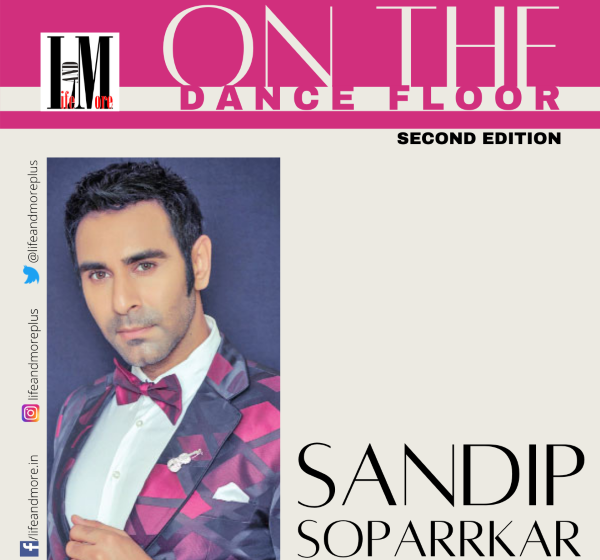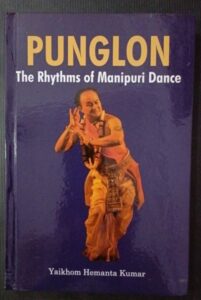‘Punglon’ by Prof Yaikhom Hemanta talks about the Rhythms of Manipuri Dance

This interview is very special to me, as I had a wonderful conversation with award winning Manipuri artist Prof Yaikhom Hemanta Kumar from Santiniketan. He is a teacher, a Pung player, a dancer, a choreographer, a writer of Manipuri dance style. He is currently working as a professor at the Sangit Bhavan Visva Bharti University, Santiniketan. He has dedicated his entire life to teaching, promoting, creating and increasing awareness of Manipuri dance and its various aspects. He recently authored a very interesting book titled Punglon – The Rhythms of Manipuri Dance. I spoke to him about the same. Excerpts from the interview:
What is the concept of your new book Punglon?
This book provides the knowledge about the basic elements of playing Manipuri Pung (Manipuri drum) and also can achieve the knowledge of rhythms for Chali Pareng, the basic foundation of Manipuri Classical dance, especially for young learners. In Manipuri language ‘Pung’ is known as Drum or Mridangam and ‘Lon’ is known as language, ‘Pung Lon’ means the languages of drum. In Manipuri dancing we have few books written only in Metei and Bengali scripts. Books written in English language are very limited, especially the textbook for Manipuri dance lovers of other states and foreigners students.
You may find books written in English language giving information regarding history of Manipuri dance and other information only for theoretical portions, but may not be seen written about the Taala systems to be used as textbook. Manipuri dance does not have enough text books written in English language. As a dance teacher with vast experience, I felt the need of text books in English for the non-Manipuri students especially for foreign students. Keeping in mind all these scarce I started writing this book on Chali Pareng, the basic foundation of classical Manipuri Dance.
In this book I tried to introduce the system of playing the drum (Pung), the technique, the positions of fingers, hands and their sound production. The notations of the Punglon (rhythms) are also written very distinctly, so that the readers can learn by one self and play after seeing the book. At the last chapter I added songs and rhythms of some dance compositions. I hope this book will help the beginners to learn Manipuri Dance and playing of Manipuri drum (Pung).
What sort of research went into it?
Oh that was very easy, I had to just write down the Taalas what I teach and practice every day with my students. I also discuss and showed my manuscript to my senior Gurus and have collected their valuable advices before sending to press. My earlier books were written in Bengali and Manipuri languages so the books were bound within that community, but this one is indeed very special to me as now it can reach to lot more people.
How has your dancing journey been?
I started learning dance at a very early age and took up Manipuri dance lesson during my college days from Jawaharlal Nehru Manipur Dance Academy, I participated in many National and International Dance Festivals and performed at many places in India and also some other countries Like USSR, Kabul, Czechoslovakia, Paris, Nepal, Sri Lanka, South Korea, Bangladesh and more. Today I am proud to say as a Manipuri dance professor I have taught dance to many talented students who today are renowned young performers, choreographers within Manipur, India as well as foreign students from Sri Lanka, Japan, South Korea and Bangladesh.
What is the evolution of Manipuri Dance?
Manipuri style of dancing is a Temple Dance form since 1779 AD. During the reign of Maharaja Rajashri Bhagyachandra, the great Vaishnava Philosopher, Choreographer King of Manipur. Manipuri Raas dance was first created by King Bhagyachandra along with the help of the then renowned dance and music Gurus of Manipur and performed at Sree Govindajee Mandap at Langthabal, Canchipur in the year 1779 AD. Manipuri dance has five kinds of Raas Dance viz Maha Raas, Kunja Raas, Vasanta Raas, Nitya Raas and Diva Raas. Among these five Raas, Mahaaraas is performed on the full moon night of Kartik Purnima, in the month of November, Kunja Raas is performed on the full moon night of Ashwin Purnima in the month of October and Vasanta Raas is performed on the full moon night of Cheitra Purnima in the month of April every year since reign of King Bhagyachandra. The remaining two Raas Lila can be performed at on day except the above mentioned three particulars days and Diva Raas is performed during day time. When you visit to Manipur on these particular days you can see the traditional Raas dances at the Sree Govindajee temple. There you will find hundreds of Gopis dancing wearing traditional ‘Kumin Poloi’.
What are your views on the solo style of Manipuri Dance?
Yes, Manipuri style of dancing may be young as a solo art form because we are still in a developing stage, Manipuri dance is always performed as group items. Manipuri Lai Haraoba dance, Raas Leela dance items are essentially group oriented items. Although, now days many young solo dancers have come up, they are participating in the National and International Dance Festivals and trying to make solo style popular too. The style and technique of this dance are very unique, main characteristics is not to break the continuity of the hands and body movements. Slow and graceful movements are its main characters.
Sandip Soparrkar holds a doctorate in world mythology folklore from Pacifica University USA, an honorary doctorate in performing arts from the National American University, He is a World Book Record holder, a well-known Ballroom dancer and a Bollywood choreographer who has been honored with three National Excellence awards, one National Achievement Award and Dada Saheb Phalke award by the Government of India. He can be contacted on sandipsoparrkar06@gmail.com


